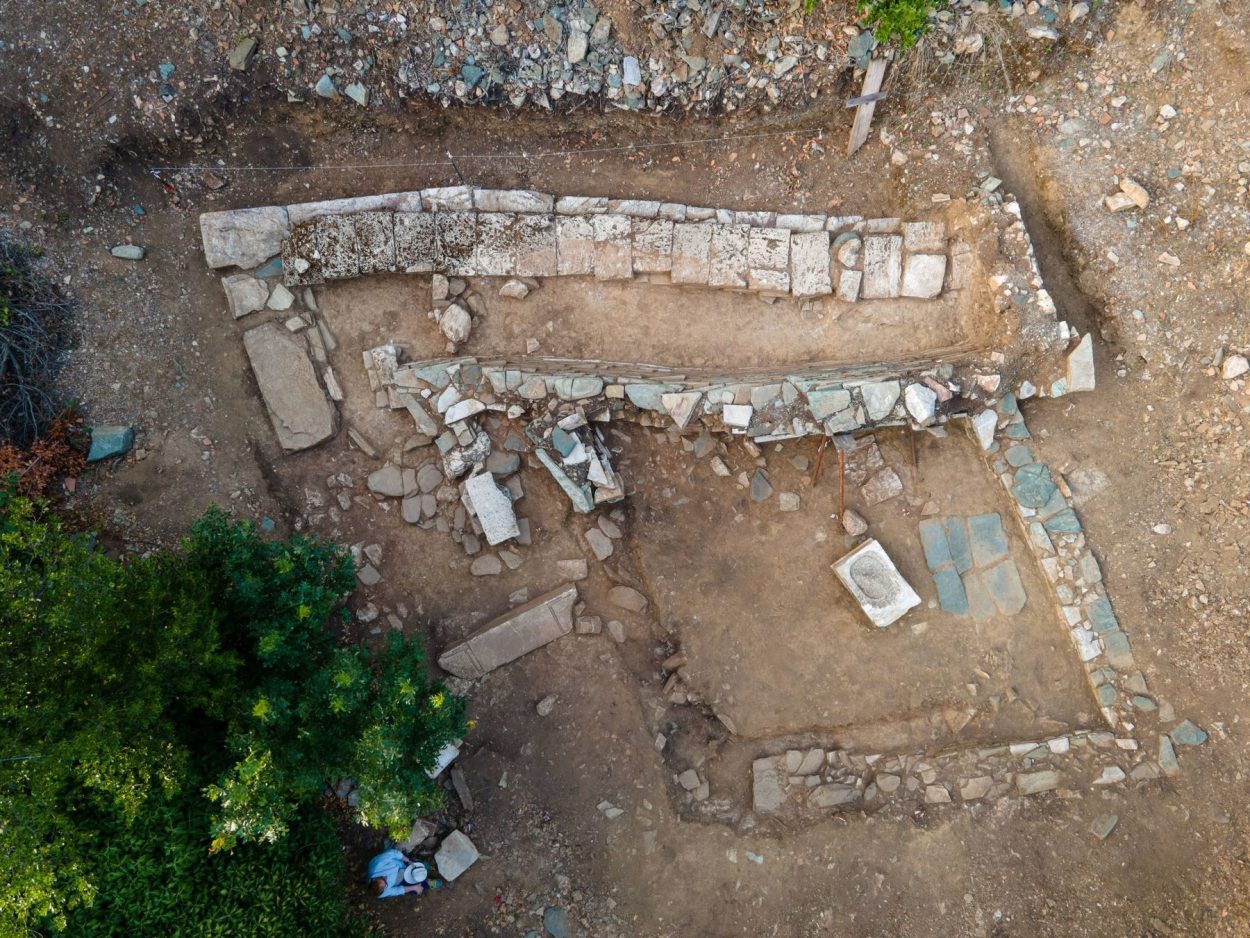Archaeologists have discovered the remains of a Hellenistic sanctuary, with an inscription associated with a city in Homer’s Iliad.
Excavations were conducted by the EFA as part of several rescue operations near the port of Agiokampos in Greece.
Headed by archaeologist Nektaria Alexiou, the team found a sanctuary from the Hellenistic period that dates from around the 3rd-2nd century BC, constructed from alabaster and locally sourced stone.
The site is situated on a series of erected terraces on the foothills of Mount Mavrovouni, covering an area of 135.9 acres that stretched to the rocky shores of the northern Aegean.

The team found numerous architectural elements, including an entablature (the upper part of a classical building supported by columns or a colonnade), five capitals in the Doric style, a statue base, parts of a column, a marble bench leg and two marble heads depicting the heads of children.
Other finds include iron nails, arrowheads, bronze rings, Thessalian and Macedonian bronze coins, in addition to clay lamps, drinking vessels, textile weights and fragments of amphorae.


Among the finds the team also discovered sealed tiles naming the owners of ceramic shops, with the most notable find being a tile inscribed with “MELIVOIAS” which may be associated with Magnesia Melivoia (also called Meliboea or Meliboia), a town and polis in ancient Thessaly.
Magnesia Melivoia is mentioned in the Iliad, also referred to as the Song of Ilion, which is an ancient Greek poem in dactylic hexameter, traditionally attributed to the author and poet Homer. Homer describes Magnesia Melivoia in the Catalogue of Ships in Book 2 of the Iliad, which lists the contingents of the Achaean army that sailed to Troy.
Hellenic Republic Ministry of Culture and Sports
Header Image Credit : Hellenic Republic Ministry of Culture and Sports







